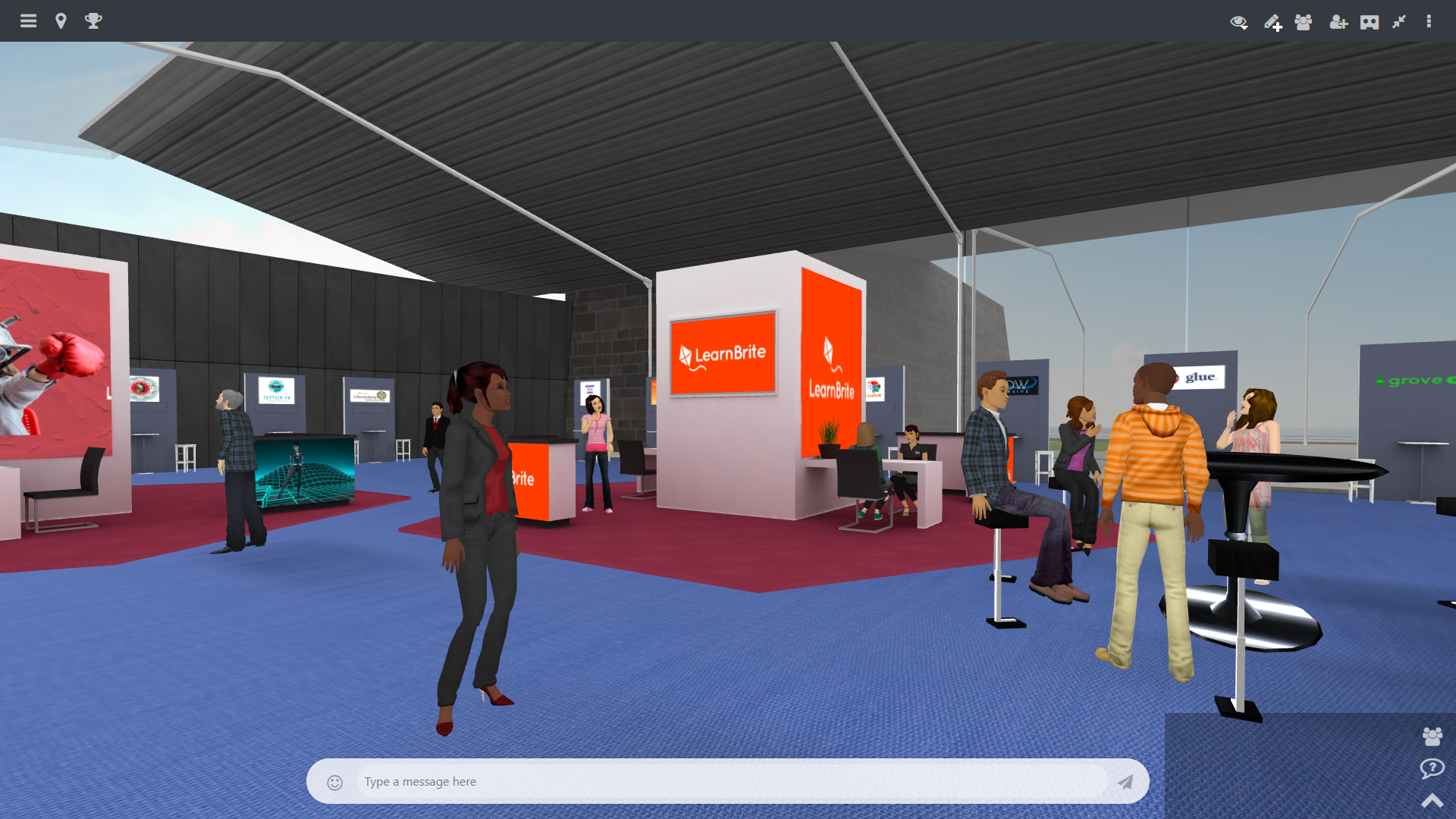Onboarding employees remotely has become an essential aspect of modern business operations, especially with the rise of remote work. The process can bring numerous benefits to employers and new hires, but it also presents unique challenges that must be addressed for a successful onboarding experience. This blog post will explore the advantages and difficulties of onboarding employees remotely.
We’ll begin by discussing the benefits such as increased productivity, cost savings, and improved employee engagement that come with effectively onboarding remote employees. Next, we’ll explore some common challenges like technology requirements and communication barriers which can hinder a smooth transition for new hires.
Furthermore, you’ll discover practical tips for creating successful remote onboarding processes, including establishing clear expectations and utilizing video conferencing tools effectively. We will then outline best practices in developing training programs and fostering collaboration among your team members working remotely.
Lastly, measuring success is crucial; hence we’ll discuss methods to track retention rates, monitor employee performance and analyze feedback from new hires as key indicators of your remote onboarding effectiveness.
Table of Contents:
- Benefits of Onboarding Employees Remotely
- Challenges of Onboarding Employees Remotely
- Tips for Successful Remote Onboarding Processes
- Best Practices for Onboarding Remote Employees
- How to Measure the Success of Your Remote Onboarding Processes
- Frequently Asked Questions Onboarding Employees Remotely
- Conclusion
1. Benefits of Onboarding Employees Remotely
Nowadays, businesses are turning to remote onboarding of personnel as a means to enlarge their staff and access international talent. Remote employee onboarding offers several benefits that can help organizations achieve greater success in the long run. This section will discuss three major advantages of onboarding employees remotely: increased productivity, cost savings, and improved employee engagement.
a. Increased Productivity
One significant benefit of onboarding remote employees is the potential for increased productivity. Remote workers often experience less distraction, allowing them to concentrate more on their duties and take advantage of flexible hours to work when most productive. Conversely, remote workers may have the advantage of arranging their work hours to fit their peak productivity times best, leading to cost savings.
b. Cost Savings
- Reduced overhead costs: Hiring remote workers instead of maintaining physical office spaces for all team members or expanding existing facilities when your company grows rapidly can result in substantial cost savings.
- No relocation expenses: Onboarding new staff remotely eliminates the need for expensive relocation packages typically associated with bringing new hires from different locations worldwide.
- Better access to talent: Companies looking for specific skill sets may find it easier (and less costly) to source candidates from various geographical areas without worrying about additional recruitment fees or travel expenses related to traditional face-to-face interviews.
c. Improved Employee Engagement
Onboarding remote employees can lead to higher employee engagement, which is crucial for long-term success. By providing a comprehensive onboarding experience that includes clear communication about the company’s mission and values and opportunities for new hires to connect with their colleagues through virtual team meetings and social events, companies can foster a sense of belonging among remote workers. This helps them feel more connected to the organization and motivated to contribute their best efforts.
In addition, an effective remote onboarding process using platforms like LearnBrite ensures new employees have access to all necessary resources and tools from day one. This empowers them to hit the ground running in their roles while feeling supported by their employer.

The benefits of onboarding employees remotely are clear, from increased productivity to cost savings and improved employee engagement. However, there can be challenges associated with remote onboarding that must be addressed to ensure a successful transition for new hires.
Key Takeaway:
A no-code platform is being developed to create immersive 3D learning scenarios for various training purposes. The focus topic is remote employee onboarding, which can be facilitated through self-paced or instructor-led courses and simulations.
2. Challenges of Onboarding Employees Remotely
While onboarding employees remotely offers numerous benefits, it also presents some unique challenges that organizations must address to ensure a smooth and successful process. To ensure a successful onboarding process, we will explore the most common challenges and provide strategies for overcoming them.
a. Technology Requirements
The first challenge in onboarding remote workers is ensuring they have access to the necessary technology tools and resources for their job roles. This includes hardware such as laptops or desktop computers, software applications like project management tools or communication platforms, and a stable internet connection to support seamless collaboration with remote team members.
To mitigate this issue, companies should develop a remote onboarding checklist outlining all essential equipment and services new hires need before their start date. Additionally, providing clear instructions for setting up these tools can help reduce confusion during the initial days of employment.
b. Communication Barriers
Lack of face-to-face interaction in remote work environments may lead to communication barriers between new hires and existing employees or managers. These barriers can make it difficult for newcomers to ask questions about company processes or seek guidance from colleagues when needed.
- Solution: Implement regular video calls using Zoom or Microsoft Teams for team meetings and one-on-one check-ins with managers during the first few weeks of employment.
- Solution: Encourage open lines of communication through instant messaging apps like Slack, where new hires can easily reach out to teammates whenever they need assistance.
c. Lack of In-Person Interaction
Without in-person interaction, it can be hard for remote employees to feel connected with their team and company culture, leading to feelings of isolation or disengagement that could hinder success. This lack of connection may lead to feelings of isolation or disengagement, ultimately impacting employee success.
To address this challenge, organizations should prioritize creating opportunities for virtual socialization and team-building activities that foster a sense of belonging among remote workers. Some examples include:
- Organizing virtual coffee breaks or happy hours where employees can casually chat and get to know each other.
- Scheduling regular video-based team meetings with icebreaker activities at the beginning.
- Creating online discussion forums or group chats focused on non-work-related topics such as hobbies, interests, or current events.
Incorporating these strategies into your remote onboarding processes will help companies overcome common challenges when integrating new staff remotely while ensuring a positive experience for all involved.
Onboarding employees remotely can be difficult, but with the right strategies and tools in place, it can be done successfully. Let’s explore some strategies and tools to aid in creating a successful remote onboarding process.
Achieve a measurable return on investment (ROI) for your training initiatives with LearnBrite. Studies reveal that heightened engagement through immersive learning reduces churn, fosters innovation, fuels growth, inspires change, and even boosts productivity by up to 12%. With LearnBrite, you can attain these outcomes in record time, unlocking the full potential of your training programs and driving tangible results for your organization.
Key Takeaway:
A no-code platform is being developed to create 3D immersive learning scenarios for various types of training, including employee onboarding. The focus is on remote onboarding, allowing companies to train new employees from a distance using interactive and engaging simulations.
3. Tips for Successful Remote Onboarding Processes
To ensure the success of your remote onboarding process, it is crucial to implement effective strategies that cater to remote workers’ unique needs and challenges. This section will discuss several tips to help you create a successful remote onboarding experience.
a. Establish Clear Expectations and Goals
Day one of virtual or in-person onboarding should involve setting precise objectives and expectations. This includes providing new hires with detailed information about their job responsibilities, performance metrics they will be evaluated against, company policies and procedures, and any specific requirements related to working remotely.
- Create an employee handbook tailored specifically for remote workers.
- Provide new hires access to relevant resources such as training materials or software tools required for their role.
- Schedule regular check-ins during the first few weeks of employment to answer questions and provide guidance.
b. Utilize Video Conferencing Tools Effectively
The use of video conferencing tools like Zoom or Microsoft Teams plays a vital role in facilitating communication between team members who work remotely. These platforms not only allow face-to-face interaction but also enable screen sharing, which can greatly enhance collaboration among colleagues during virtual meetings or training sessions:
- Organize virtual meet-and-greets: Schedule video calls where new hires can introduce themselves to existing employees within their department or across the organization.
- Conduct live training sessions: Utilize video conferencing tools to deliver interactive and engaging training content, ensuring new hires receive the necessary knowledge and skills for their role.
- Create a virtual office space: Encourage team members to use these platforms throughout the day for informal chats or quick questions, fostering a sense of camaraderie among remote workers.
c. Create a Welcoming Environment for New Hires
Making new employees feel welcome is essential in building strong relationships within your team and promoting employee success. This can be achieved by implementing various strategies that help create an inclusive environment even when onboarding remote workers:
- Schedule regular virtual social events such as happy hours or game nights where employees can interact informally with one another outside of work-related tasks.
- Send company swag like branded merchandise (t-shirts, mugs) or personalized gifts to new hires as part of their onboarding package.
- Promote open communication channels: Ensure all employees have access to instant messaging apps like Slack or Microsoft Teams so they can easily reach out to colleagues whenever needed.
Successful remote onboarding processes require a clear understanding of expectations and goals and effective use of video conferencing tools to create an inviting environment for new hires. To further ensure successful onboarding experiences, it is important to develop best practices, such as providing access to necessary resources and tools while encouraging collaboration and team-building activities.
Key Takeaway:
A no-code platform is being developed to create 3D learning scenarios for various types of training, including employee onboarding. The focus is on providing immersive experiences that can be accessed remotely and is suitable for self-paced or instructor-led courses, micro-learning modules, gamified learning, role-play simulations and more.
4. Best Practices for Onboarding Remote Employees
To ensure a successful onboarding process for remote employees, we will outline some best practices to create an engaging and informative experience. Following these guidelines can create an engaging and informative experience that helps new hires feel welcomed and prepared to contribute to your organization.
a. Develop an Effective Training Program
An effective training program is essential when onboarding remote employees. A program designed to work for different types of learners should include both self-directed learning elements and instructor-led activities. It’s important to use tools like LearnBrite, which offers immersive 3D experiential learning scenarios that can be tailored to various courses or training needs.
- Include clear objectives and goals in each module or session.
- Make sure the material is pertinent, current, and fascinating.
- Provide opportunities for hands-on practice through simulations or role-play exercises.
- Incorporate regular assessments or quizzes to measure progress and understanding.
b. Provide Access to Necessary Resources and Tools
To help your new hires succeed while working remotely, they must have access to all necessary resources from day one of their onboarding processes. This includes:
- A comprehensive employee handbook outlining company policies,
- Detailed job descriptions,
- List of key contacts within the organization,
- Login credentials for any required software applications,
,,,, , and - Any other essential tools or resources are specific to their role.
In addition, make sure your remote employees have the necessary hardware and software to work effectively. This may include providing laptops, headsets, or any specialized equipment required for their job function.
c. Encourage Collaboration and Team Building Activities
Fostering a sense of camaraderie among remote team members is vital in creating an inclusive company culture that promotes employee success. Here are some ways you can encourage collaboration and team building:
- Schedule regular video conferences for both formal meetings and informal catch-ups,
- Create virtual spaces where employees can socialize during breaks,
- ,,, , Organize online events such as game nights or trivia sessions,,,,’, ‘-”, ”, ‘ -”,
It is imperative to furnish new staff with the essential materials and tools and to encourage them to join team-building activities for successful remote onboarding. With this knowledge in mind, it’s important to measure the success of your remote onboarding processes by tracking retention rates, monitoring employee performance and analyzing feedback from new hires.
Key Takeaway:
A no-code platform is being developed to create immersive 3D learning scenarios for various training purposes, such as employee onboarding and soft skills development. This project focuses on the remote onboarding of employees using gamified learning techniques and role-play simulations.
5. How to Measure the Success of Your Remote Onboarding Processes
To ensure that your remote onboarding processes are effective and successful, measuring their impact on new hires and the organization is crucial. By tracking key performance indicators (KPIs) such as retention rates, employee performance, and feedback from new hires, you can identify areas for improvement and make necessary adjustments to enhance your remote onboarding experience.
a. Track Retention Rates
One of the most important KPIs when evaluating the success of your remote onboarding process is the employee retention rate. A successful onboarding process is reflected in a high retention rate, which indicates that employees feel supported and are likely to remain with the company long-term. Divide the number of staff still employed by your firm after a specific period (for example, 12 months) by the total quantity of personnel brought in during that period to work out this indicator.
You can also compare these figures against industry benchmarks or internal targets to gauge how well your remote onboarding program performs relative to expectations.
b. Monitor Employee Performance
Another valuable indicator of successful remote employee onboarding is individual job performance over time. Assessing factors such as productivity levels, quality of work output, and adherence to deadlines or project milestones will provide insight into whether newly onboarded team members have been adequately prepared for their roles within a remote work environment.
- Productivity: Are newly hired employees meeting expected productivity levels?
- Quality of work: Is the quality of their output meeting or exceeding company standards?
- Deadlines and milestones: Are new hires consistently meeting deadlines and contributing to project milestones?
c. Analyze Feedback from New Hires
Gathering feedback directly from newly onboarded employees is an essential component in evaluating the success of your remote onboarding process. Conducting surveys, individual chats, or group talks frequently can assist in pinpointing areas that need improvement and understanding which elements are performing well.
In addition to quantitative data, such as retention rates and performance metrics, qualitative feedback provides a more comprehensive understanding of how new hires perceive their onboarding experience within your organization. This information can be invaluable when making adjustments to enhance the overall effectiveness of your remote onboarding program.

To ensure that your remote employee onboarding processes are successful, tracking key performance indicators like retention rates, monitoring employee performance over time, and gathering valuable feedback from new hires themselves is crucial. By doing so, you’ll be able to make necessary improvements while fostering a positive company culture that supports long-term growth and development for both existing employees and those joining remotely.
Key Takeaway:
A no-code platform is being developed to create 3D immersive learning scenarios for various types of training, including employee onboarding. The focus is on remote onboarding, and the platform aims to provide engaging and interactive experiences for new hires.
Frequently Asked Questions Onboarding Employees Remotely
How do I onboard a new employee remotely?
To onboard a new employee remotely, establish clear expectations and goals, utilize video conferencing tools effectively, create a welcoming environment for the new hire, develop an effective training program, provide access to necessary resources and tools, and encourage collaboration and team-building activities. Regular check-ins with remote employees can also help ensure their successful integration into the team.
What are the 5 Cs of employee onboarding?
The 5 C’s of employee onboarding are Compliance (understanding company policies), Clarification (defining roles and responsibilities), Culture (sharing company values), Connection (building relationships with colleagues), and Check Backs (ongoing support through regular follow-ups). These elements create a comprehensive onboarding experience supporting employees’ professional growth and organizational success.
Why is remote onboarding important?
Remote onboarding is important because it helps integrate new hires into the organization effectively, even when not physically present in an office setting. It ensures remote employees receive proper training, understands their roles clearly, and feel connected to their colleagues/team culture while working from home or another location. This ultimately leads to increased productivity levels among your workforce and improved retention rates over time.
Is virtual onboarding effective?
Yes, virtual onboarding can be highly effective if implemented correctly. UsingUsing technology such as video conferencing tools combined with well-designed training programs tailored specifically for remote workers and ongoing support mechanisms like regular check-ins will ensure that newly hired employees become productive members of your organization quickly despite being geographically distant from other team members.
Conclusion
Remote personnel onboarding can be cost-effective and time-saving while providing a practical experience for new hires. Organizations can ensure their remote onboarding program is successful by taking the time to consider challenges and best practices before starting the process. With careful planning and clear communication throughout the process, businesses can create a positive environment that encourages employee engagement even when working from home or in other remote locations.
Secure the future of your Metaverse with LearnBrite’s cutting-edge browser-based platform that allows seamless access on smartphones, tablets, laptops, and VR/AR headsets, without the need for downloads or software installations. Stay ahead of the curve and ensure universal accessibility for all users, making your Metaverse experience truly inclusive and future-proof.
Experience the power of immersive 3D learning with LearnBrite’s no-code platform. Make onboarding employees remotely easier and more effective than ever before!


Recent Comments